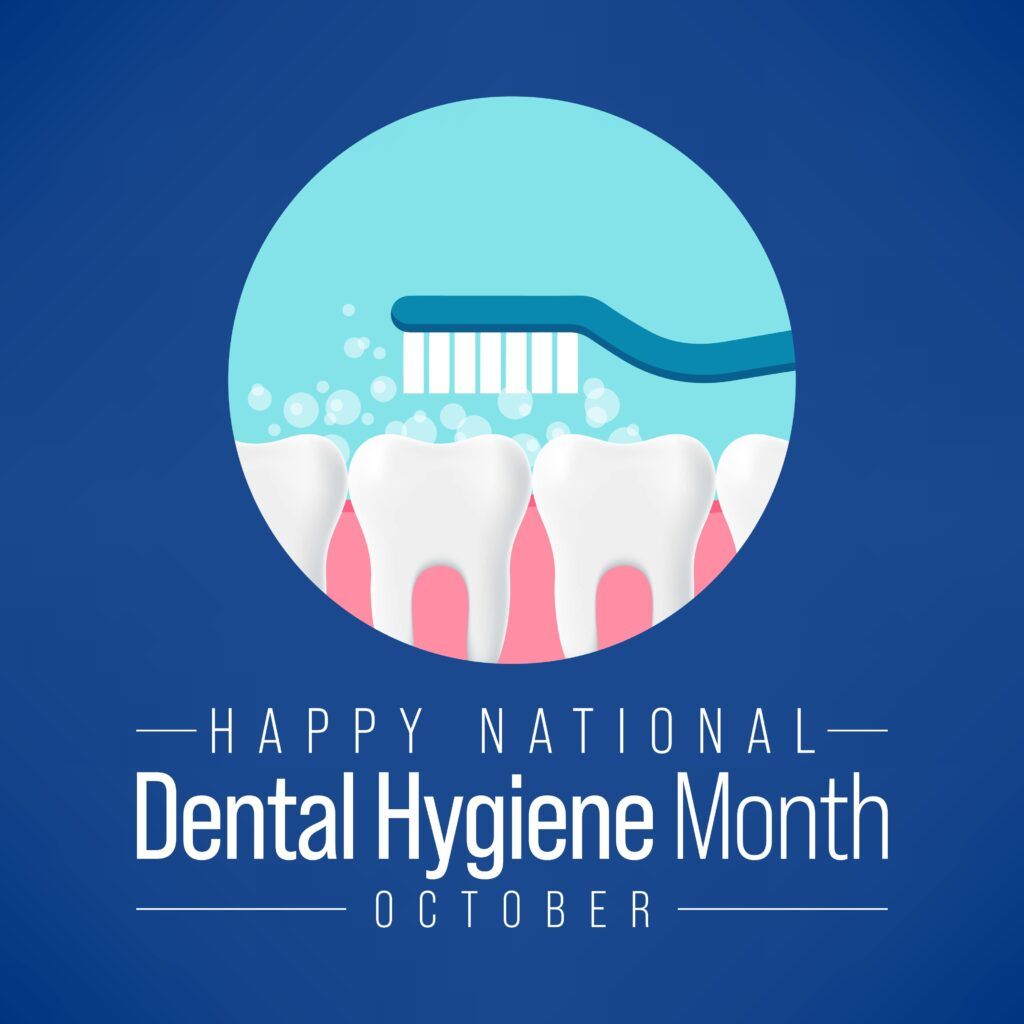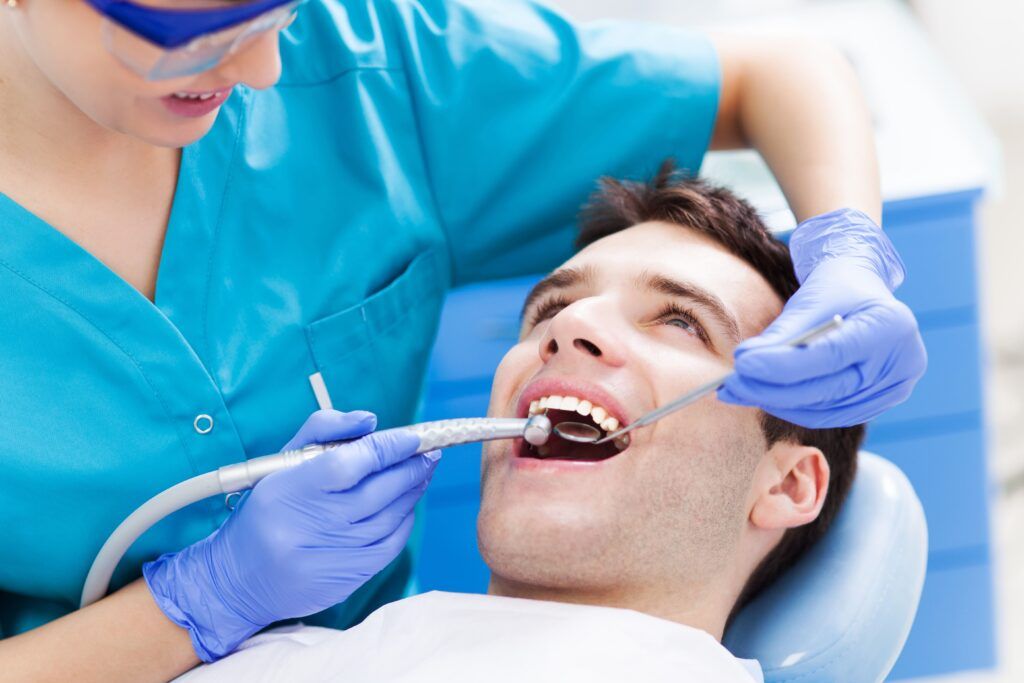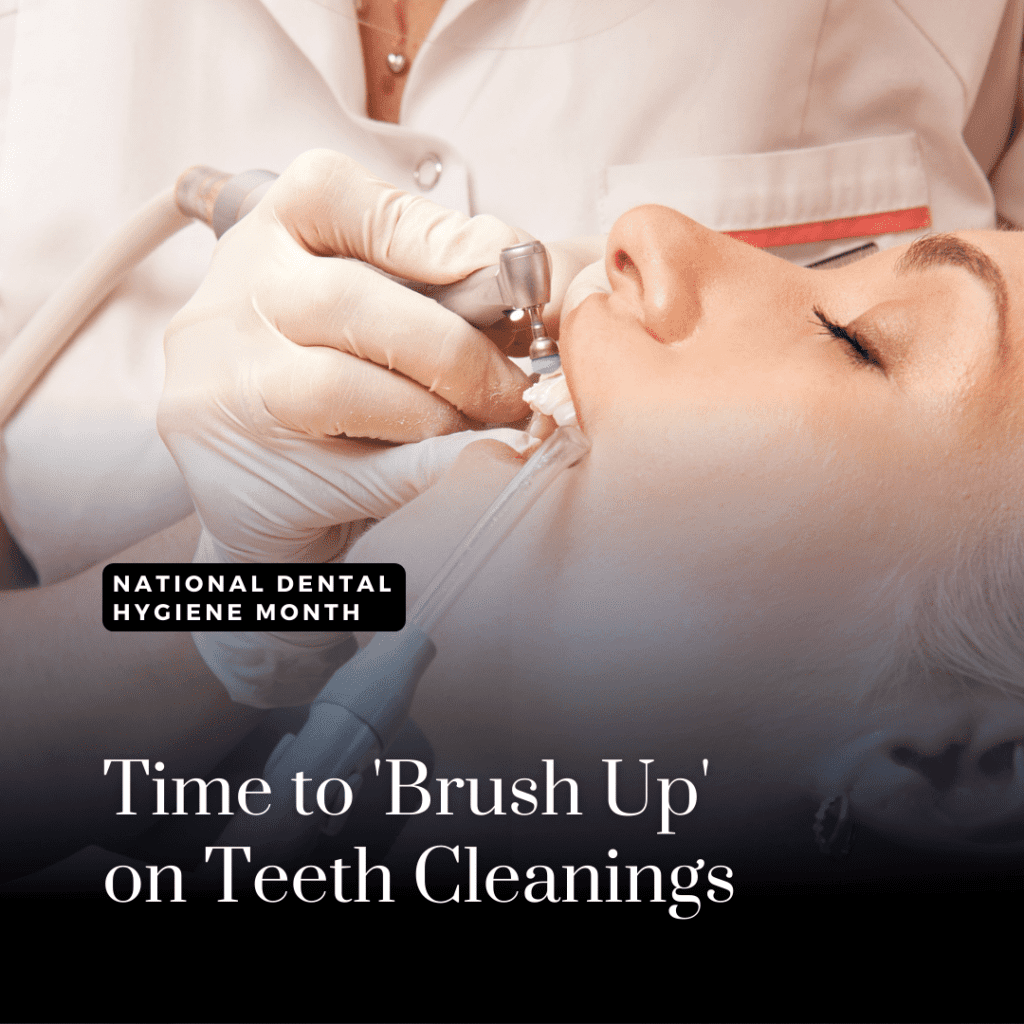
It’s time to brush up on dental cleanings, and we’re here to help. That’s right- it’s National Dental Hygiene Month in October! This means you have the chance to learn more about oral hygiene from a professional dentist in your area. Dentist or not, there are some things you should know for sure about this important part of your dental care routine.
Dental prophylaxis, more commonly known as a teeth cleaning, is a dental hygiene procedure in which the dentist or hygienist thoroughly cleans your teeth. Cleaning with a dental scaler removes all materials accumulated on tooth surfaces above the gums- this includes not only food debris but also bacteria build up, plaque, and tartar. Teeth cleanings should be performed once every six months in order to decrease the risk of tooth decay and gum disease.
You should have your teeth regularly cleaned because:
- Teeth cleanings are the number one way to prevent tooth decay and gum disease
- Teeth cleanings keep problems from developing into serious issues
- Decreases the need for expensive treatments down the road
- Minimizes the risk of tooth loss
- Helps maintain your overall health
Steps of a Teeth Cleaning
Dental Exam
The dentist will perform a thorough dental exam to check for any health issues, such as oral cancer, tooth decay, or gum disease. They will use a small mirror and a light to make sure they can carefully evaluate the entire inside of your mouth. Some dentists may also require dental x-rays to evaluate the underlying bone structure.
Dental Scaling
Next, your dentist or their hygienist will use a metal scaler or ultrasonic water scaler to scrape plaque and tartar off the fronts, backs, and sides of the teeth, as well as along the gum line. You may hear scraping noises if a metal scaler is used, however you should not experience any discomfort during the scaling process.
Gritty Toothpaste

After scaling, the remaining build-up will be removed using an electrical brush in conjunction with a gritty toothpaste that basically exfoliates the enamel. As debris is eliminated, you may hear a grating noise. There’s no need to be concerned; this is perfectly safe when done by a dental professional. However, this should never be performed at home since it can lead to enamel erosion if not done properly.
Floss
The next stage is to have your teeth flossed by a dental hygienist. This frees up any remaining plaque and allows your hygienist to spot places where you may be neglecting during your typical flossing session. This is also a good time to ask about your flossing technique if you have questions.
Fluoride Treatment
The final stage in any teeth cleaning is a fluoride treatment because fluorine makes the enamel stronger and more resistant. First, your teeth will be rinsed with a fluoride rinse to remove any remaining debris that was loosened while flossing. Then, a foamy gel or trays with a sticky paste may be placed on the surface of your teeth as part of this procedure. These fluoride treatments are frequently flavored and only stay on for a matter of minutes. After that, your teeth are coated with a fluoride varnish that will stay in place.
Dental cleanings are an important part of your dental hygiene routine. They help to prevent tooth decay, gum disease and other oral health issues by removing plaque and tartar buildup from the teeth. A good time to schedule a cleaning is every six months with your dentist – especially if you want to avoid expensive treatments down the road or losing teeth altogether!

Dr. Sarmad Channo, a Rochester, MI dentist, received his doctorate degree from New York University Dental School. Since then, he has continued studying to broaden his expertise and has also graduated from Progressive Orthodontic Seminars with the highest of honors. Dr. Channo has also served as an instructor for both the McGann Postgraduate School of Dentistry and Progressive Orthodontic Seminars.

